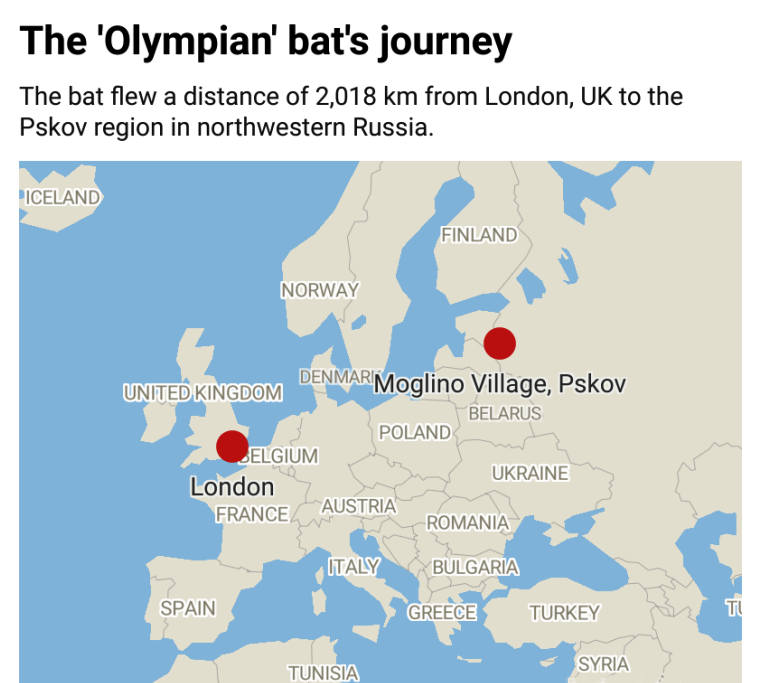Important Facts For Prelims
Olympian Bat
- 13 Aug 2021
- 3 min read
Why in News
Recently, a bat amazed the scientists by flying a distance of more than 2,000 km from London to the Pskov region in northwestern Russia. The bat is dubbed as the “Olympian bat” and has generated keen interest in climate scientists.
Key Points
- The bat belongs to the Nathusius’ pipistrelle species of bats.
- The journey is significant because it is the longest one undertaken by a bat from Britain across Europe.
- Bats belonging to the Nathusius’ pipistrelle species typically weigh less than 10 grams.
- They are known to migrate from summer breeding grounds in northeastern Europe to warmer areas of the continent where they hibernate in trees in buildings.
- The ‘Olympian’ bat’s record is topped by another bat from the same species that flew from Latvia to Spain in 2019 covering a distance of 2,224 km.
- For climate scientists, the journey is a window into studying bat migration and its connection with climate change.
- Increased variation in climatic extremes raises the possibility of bats emerging from hibernation early or at a greater frequency.
- That would not only put hibernating bats at risk from depleted energy stores, but could also affect the birth and survival of pups.
- Thus, Nathusius’ pipstrelle’s range expansion is linked to climate change and future changes in climate will further impact this species.
- The Bat Conservation Trust launched a project called the National Nathusius’ Pipistrelle Project in 2014.
- The project aims to improve understanding of the ecology, current status and conservation threats for Nathusius’ pipistrelles in Great Britain.
- One of the goals of this project is to determine the migratory origins of this species of bats since they might help in understanding its links to climate change.
- There is already some evidence of birds migrating early because of a warming planet.
- IUCN status of Nathusius’ pipistrelle species of bats: Least concern.
Hibernation
- It is an inactive state resembling deep sleep in which certain animals living in cold climates pass the winter.
- In hibernation, the body temperature is lowered and breathing and heart rates slow down.
- It protects the animal from cold and reduces the need for food during the season when food is scarce.
- Normally, Polar bears, Rodents, and Bats are some animals that show hibernation.
- Recently, a new research in zebrafish has demonstrated how induced hibernation (torpor) may protect humans from the elements of space, especially radiation, during space flight.





